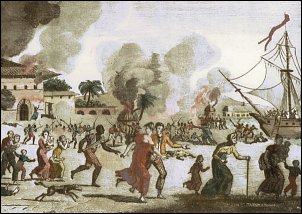
Today, as I was looking for indigo flowers for colorchallenge, I remembered my history teacher talking about an Indigo revolt in India (Nil vidroha). So, I decided to browse in the web about it.
It was a peasant movement and uprising of indigo farmers against the indigo planters that arose in Bengal in 1859.
The indigo planters persuaded the peasants to plant indigo instead of food crops. They provided loans, called dadon, at a very high interest. Once a farmer took such loans he remained in debt for his whole life before passing it to his successors. The price paid by the planters was meagre, only 2.5% of the market price. The farmers could make no profit growing indigo. The farmers were totally unprotected from the indigo planters, who resorted to mortgages or destruction of their property if they were unwilling to obey them. Government rules favoured the planters. By an act in 1833, the planters were granted a free hand in oppression. Even the zamindars sided with the planters. Under this severe oppression, the farmers resorted to revolt.
It was so important that it spread rapidly in Murshidabad, Birbhum, Burdwan, Pabna, Khulna, and Narail. Some indigo planters were given a public trial and executed. The indigo depots were burned down. Many planters fled to avoid being caught. The zamindars were also targets of the rebellious peasants.
Unfortunately, the revolt was ruthlessly suppressed. Large forces of police and military, backed by the British Government and the zamindars, mercilessly slaughtered a number of peasants. British police mercilessly hanged great leader of indigo rebels Biswanath Sardar alias Bishe Dakat in Assannagar, Nadia after a show trial. Some historians opined that he was the first martyr of indigo revolt in undivided Bengal. In spite of this, the revolt was fairly popular, involving almost the whole of Bengal. The Biswas brothers of Nadia, Kader Molla of Pabna, and Rafique Mondal of Malda were popular leaders. Even some of the zamindars supported the revolt, the most important of whom was Ramratan Mullick of Narail.
The revolt had a strong effect on the government, which immediately appointed the "Indigo Commission" in 1860. In the commission report, E. W. L. Tower noted that "not a chest of Indigo reached England without being stained with human blood". Evidently it was a major triumph of the peasants to incite such emotion in the Europeans' minds. Thus the revolt was a success.
Indigo revolt - Wikipedia
https://en.wikipedia.org/wiki/Indigo_revolt
Hi! I am a robot. I just upvoted you! I found similar content that readers might be interested in:
https://en.m.wikipedia.org/wiki/Indigo_revolt